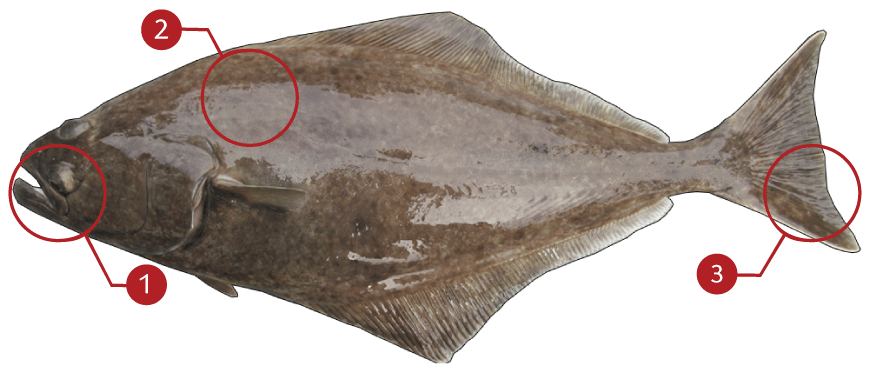PACIFIC HALIBUT
How to identify a Pacific Halibut
The teeth are strong and equally well developed on both sides of the jaws. Coloration is uniformly dark brown or gray on the top side (often will small, lighter spots), and white and relatively featureless on the blind side.Females grow to weights of over 470 lb. (213 kg), live to a maximum age of 35-45 years and may attain a length of 9 ft. (3 m). By comparison, males probably do not exceed 40 lb. (18 kg) or 55 in. (140 cm), and their maximum life expectancy appears to be about 25 years. The females are more numerous than the males and grow faster, except during the early stages of development.
Where to catch Pacific Halibut
The Pacific halibut occurs in cold waters of the North Pacific from the Bering Sea south to about Santa Rosa Island, California, on the American side and to northern Japan (including the Okhotsk Sea) on the Asian side. The Pacific halibut is highly migratory. Tagging operations have shown that some adult specimens travel 2,000 miles or more, though others appear to remain near the spawning grounds. In northern areas large halibut can be found in relatively shallow waters, but in the warmer southern portions of their range they may go as deep as 600 fathoms or more.
IDENTIFICATION

| | Both eyes are on the right side of the head |
| | Coloration is uniformly dark brown or gray on the top side with irregular blotches and the lateral line has a pronounced arch above the pectoral fin |
| | Distinguished from other flatfish, the tail is crescent-shaped with fin tips longer than in the middle |
TARGET AREAS
|
Acknowledgements: We thank TAKEMEFISHING.org (www.takemefishing.org), Wisconsin Department of Natural Resources, Indiana Department of Natural Resources for their contributions to these FISH FACTS.

